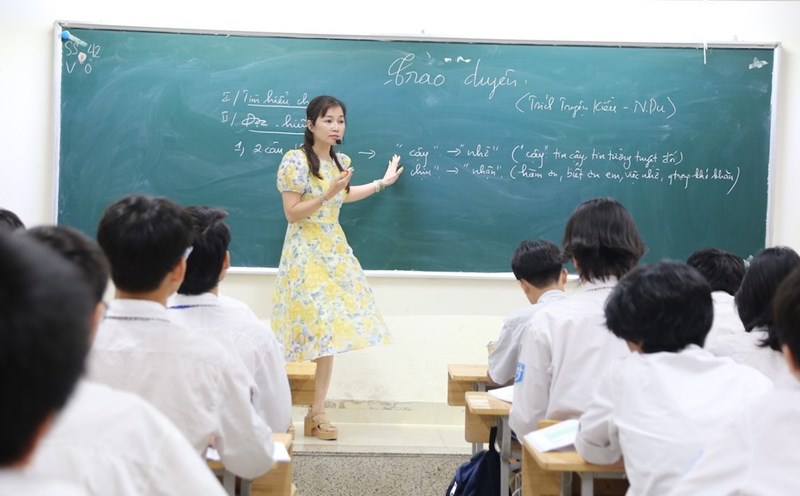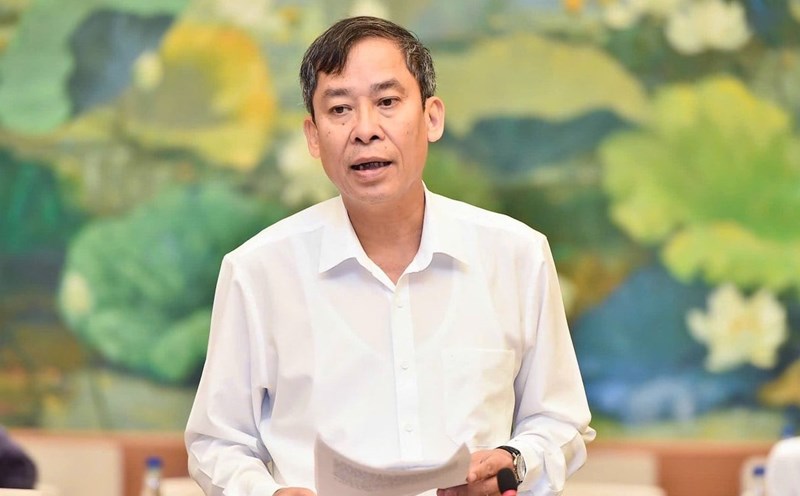The content is included in the draft guidelines for arranging and organizing kindergartens and general schools in accordance with the two-level government, sent by the Ministry of Education and Training for comments from the Ministry of Justice, Home Affairs, Finance and provinces and cities.
Accordingly, the Ministry of Education and Training recommends that localities review the network of kindergartens, general schools and continuing education schools according to the following criteria: Number, scale of classes, staff, teachers, staff; and re-evaluate facilities.
From there, provinces and cities develop a reorganization plan, including merger, consolidation, dissolvement or new establishment to be reasonable, without wasting resources. In particular, the Ministry of Education and Training proposed prioritizing the model of inter-level primary and secondary schools in areas with few people or difficult travel conditions; consider merging small-scale, sub-standard kindergartens and primary schools in the same commune and ward.
According to current regulations, kindergartens must have at least 9 groups (class size is 20-35); the maximum is 30. At primary school level, the minimum number of classes is 10 (the number of classes is 35), the maximum is 30, with 5 classes in difficult areas.
The Ministry noted that the arrangement of schools and classes must ensure the following principles:
Do not lose the opportunity to access students' education, ensure their safety during their school days; do not merge if the school is too far from their hometown or traffic conditions are not suitable.
Only arrange schools in the same commune or ward; prioritize keeping schools with favorable conditions; dissolve schools that are small, substandard or operate ineffectively.
Do not merge kindergartens with general schools, or general schools with continuing education centers.
Ensure that each commune and ward has at least one school at each level: kindergarten, primary school, secondary school.

Have a clear roadmap, collect opinions and receive consensus from relevant parties, to minimize disruption in teaching and learning.
Localities need to prioritize the budget to renovate and upgrade facilities and teaching equipment at key schools before receiving students from satellite schools; arrange appropriate teachers, ensure working conditions for teachers after the arrangement.
The Ministry also requires the development of a plan to reorganize the network of educational institutions to be based on the results of the review, development of plans and projects to reorganize (merge, consolidate, dissolve or form newly established) educational institutions in a reasonable and effective manner, without wasting resources. The local planning project and plan needs to clearly state the goals, tasks, deadlines, resources, routes and assign specific responsibilities to the collectives and individuals in charge.
Priority is given to inter-level primary and secondary school models in sparsely populated areas or areas with difficult travel conditions. At the same time, consider merging kindergartens and primary schools with small scale and below standards in the same commune according to a suitable approach.
Keep schools and school sites with favorable conditions (quality facilities, transportation, residents), dissolve subsidized schools that do not meet standards, operate ineffectively; evacuate children, students, and trainees to key schools with standard facilities.
Reorganize continuing education centers, vocational education centers - continuing education to ensure compliance with lifelong learning needs and management models of provincial and commune levels.
A few days earlier, the Ministry of Home Affairs also requested similar requirements, in which vocational education and continuing education centers were merged into vocational high schools (equivalent to high school level), under the Department of Education and Training.
Currently, the country has more than 23 million preschool children and primary school students. The number of primary schools is over 12,100, secondary and high schools are 10,700 and 2,455, respectively.










